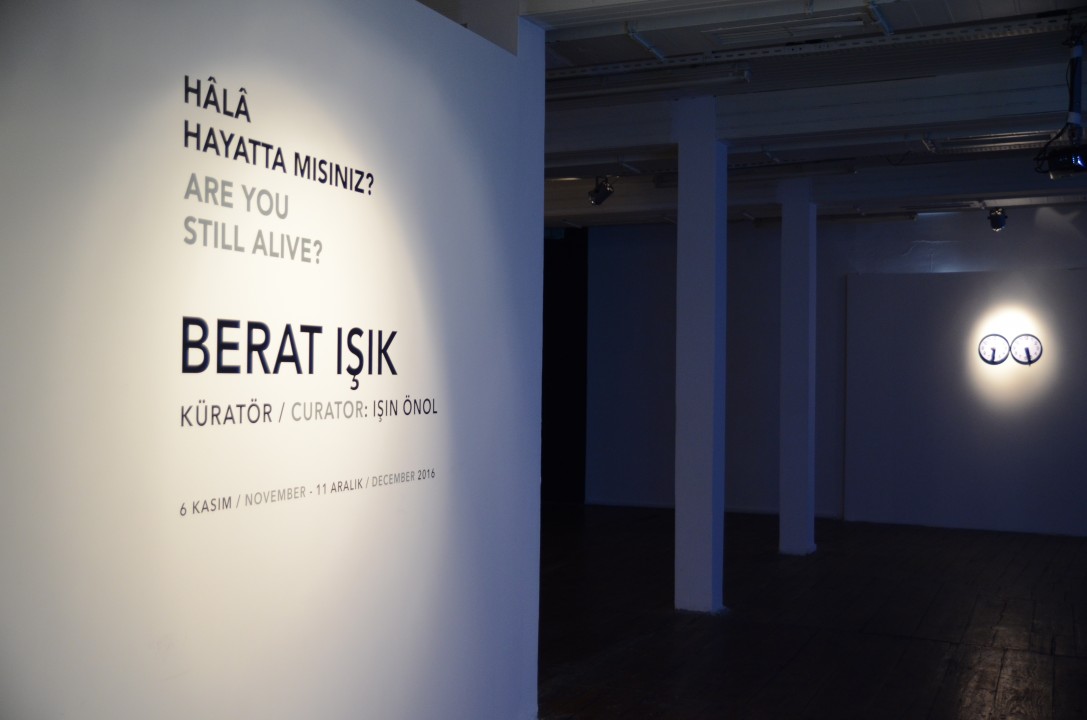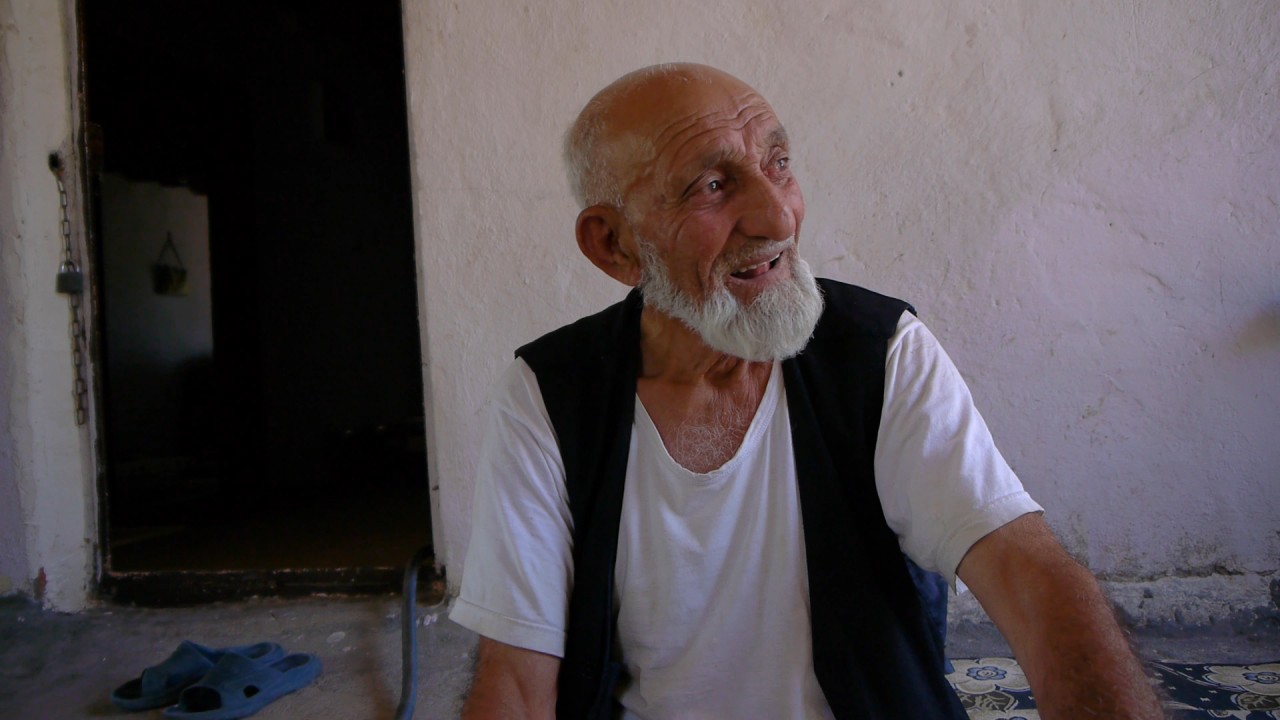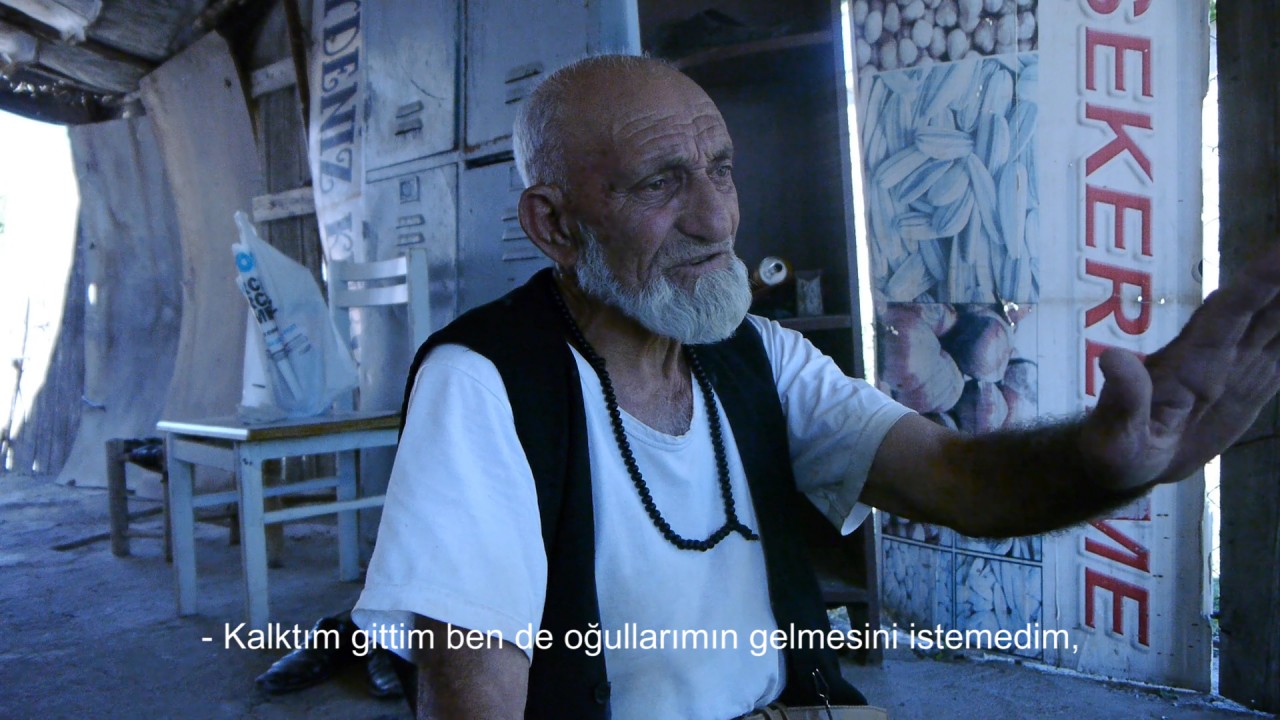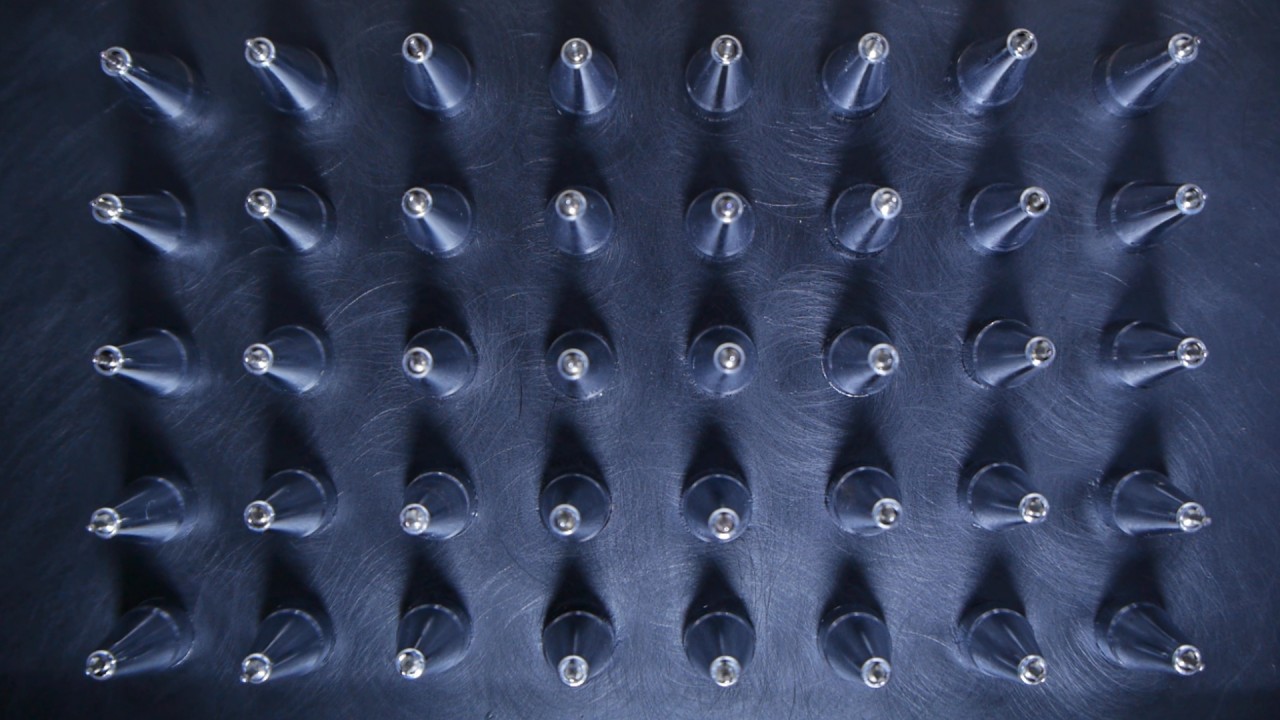ARE YOU STILL ALIVE?
6 November – 11 December 2016
Are You Still Alive?
BERAT IŞIK
Curator: Işın Önol
DEPO Istanbul

Hâlâ Hayatta mısınız?
(Türkçe metin için tıklayınız)
Berat Işık’s solo exhibition Are You Still Alive? consists of works that the artist produced, completed or revised during 2015 and 2016 specifically for this exhibition. Inspired by the Japanese conceptual artist On Kawara’s work “I am Still Alive”, which involves 900 telegrams sent to colleagues and friends, the title refers to the city of Diyarbakır and its hinterland, and the lack of communication between those inhabiting it and the rest of the world.
Throughout the process of preparing the exhibition over the course of the past two years, the living conditions in Diyarbakır have changed drastically and incessantly. These changes had a strong impact on the production of the works, and a number of drastic events transformed the outcomes: The curfew that started after 6-7 October 2014 clashes, during which tens of people lost their lives, incessant clashes, constant sound of explosions and gunfire, the attempt of a military coup d’état, the imposition of the state of emergency, the laying off of thousands of teachers. These and many other factors affected life in the city directly, and at the same time the process of preparing this exhibition.
The exhibition title also refers to a work the artist had planned to produce together with inmates of Diyarbakır Prison. Since the crafts workshops carried out with prisoners are cancelled due to the state of emergency, the project was completed by a crafts instructor in Istanbul, using a peculiar handicraft technique known as pin and thread art that is often used by prisoners in the region. An unknown inquirer poses an ambiguous question, one that so often appears in peoples’ minds after yet another explosion has taken place: By being led to think about his or her beloved ones, the beholder is induced to share that deep feeling of insecurity so painfully familiar to the people of the Diyarbakır region, both inside and outside of prisons. (fig 2)
The object and sound installation “103” (fig 1) reprocesses the restlessness and insecurity that has become the most common sensation in and around Diyarbakır. A certain sense of shared silence to which citizens were condemned to by the incessant sound of artillery shooting which could be heard even from the remotest corners of the city during the 103 days long curfew that started on 2 December 2015, after the assassination of human rights lawyer Tahir Elçi on 28 November 2015 comprises the basis of this installation. The door, typical of traditional Diyarbakır houses, is re-produced by the artist out of scrapped material, and the sound was collected from several types of cannons and tanks used in the region during this time.
Three video works titled “Dream” (fig 7), “Press” (fig 6) and “We Are Almost There” (fig 5) create a language from an abstract expression – inspired by John Cage’s renowned work “4’33””– to be able to convey the impact of political oppression on language and speech. “We Are Almost There” is comprised of the footage the artist has recorded while crossing the Baltic Sea during his recent visit to Northern Europe, and citation of the 14th verse of Mehmed Uzun’s poem “Destana Egîdekî” by Ciwan Haco. In 1976 Mehmed Uzun had to make presumably a similar journey to Sweden to live in exile. The words of the poem are distorted to be unintelligible, referring to Uzun’s trials in which one of the military prosecutors insisted that Kurdish language did not exist. “We Are Almost There” relates to the language’s rough journey with a vague ending, in order to exist.
The work “Perfect Lovers”, citing Felix Gonzales-Torres’ “Untitled (Perfect Lovers)” (1987-1990), depicts a knife that is cruelly stabbed into the hope of coexistence in synchrony. (fig 4)
“A Midsummer Night’s Dream”, a documentary film, offers a glimpse at an experience the artist had thirty three years ago which he occasionally recalls shuddering or like a miraculous dream. Through a camera view from above, he takes the viewers to the religious ritual of Sakal-ı Şerif in which an Islamic relic, allegedly hair from the beard of Prophet Muhammad, is unwrapped and presented in a case to the visitors on the 27th night of Ramadan, a holy night for the believers. (fig 8)
The documentary “Oasis”, that has been shown at a number of film festivals, approaches a life story in the context of environmental policy. In 2014 Reşit Zengin’s house was demolished and he was relocated to an apartment constructed by the municipality as part of an urban transformation project. The old man still spends six months of a year outside in the garden, on the wooden sofa he has built. (fig 3)
In the videos and installations at Are You Still Alive? Berat Işık attempts to convey the very affect invoked rather than merely representing an incident and deals with the notions associated with power relations through timeless and metaphorical language.
Production support provided by:
SAHA – Supporting Contemporary Art from Turkey
PRESS:
- December 14, 2016: Artful Living, “Berat Isik’tan Ne Ölen Ne Yasayanlara” Derya Yücel
- December 01, 2016: Istanbul Art News, “Sessizligin Sesi”, Fahire Kurt
- November 20, 2016: Sanatatak, “Asıl Siz Hayatta Misiniz?”, Mahmut Koyuncu
- November 19, 2016: Gazete Vatan, “Kasım’da Öne Cikan Sergiler”, Banu Carmikli
- November 18, 2016: Gazete Karinca, “Hala Hayatta Misiniz?”, Delal Külek
- November 12, 2015: Gazete Duvar, “Demokrasi Gemisi Zamanla Boşalırken”, Evrim Altuğ
WORKS AT THE EXHIBITION


1) 103, audio and spatial installation, 2016

2) Are You Still Alive?, pin and thread technique, 40×60 cm, 2016



3) Oasis, video, 22’01”, 201

4) Perfect Lovers, mixed media installation (two clocks, motors, knife, electronics circuits), 2016

5) We are Almost There, video, 4’33”, 2016



6) Press, video, 4’33”, 2016

7) Dream, video, 4’33”, 2016

Hâlâ Hayatta mısınız?
BERAT IŞIK
6 Kasım – 11 Aralık 2016
Küratör: Işın Önol
Hâlâ Hayatta mısınız?, Berat Işık’ın 2015-2016 yıllarında ürettiği, özellikle 2016 yılında bu sergi için tamamladığı ya da revize ettiği eserleri içeriyor. Sergi başlığı, Japon kavramsal sanatçı On Kawara’nın arkadaşlarına ve meslektaşlarına gönderdiği 900 telgraftan oluşan “I am Still Alive” (Hâlâ Hayattayım) eserinden esinleniyor ve Işık’ın yaşadığı kent olan Diyarbakır’ın içinden geçtiği endişe verici süreçte, içeridekiler ve dışarıdakilerle kurulamayan bağlantıya referans veriyor.
Son dönemde yaşam koşulları hızla ve sürekli kötüleşen Diyarbakır’da üretilen eserler, geçtiğimiz iki yıla yayılan üretim süreçleri boyunca defalarca değişti, dönüştü. 6-7 Ekim çatışmalarındaki kayıplar, devamındaki sokağa çıkma yasakları, hendeklerin kazılması, çatışmalar, aralıksız silah ve patlama sesleri, darbe girişimi, Olağanüstü Hal uygulamaları, öğretmenlerin açığa alınması gibi kentteki hayatı doğrudan etkileyen olaylar, serginin hazırlık sürecini de etkiledi.
Diyarbakır Cezaevi mahkûmları ile ortak olarak çalışılması planlanan ve sergiye de adını veren “Hâlâ Hayatta mısınız?” başlıklı çalışma, yaşanan olumsuz süreç ve OHAL sonrası mahkûmlarla yapılan hobi faaliyetlerinin durdurulması sonrasında, İstanbul’da bir el sanatları eğitmeni tarafından üretildi. Havada kalan ve kimin kime yönelttiği belli olmayan ve aslında her patlamada yakınlarını düşünürken zihinlerden geçirilen bu soru, içerde ve dışarda özgür ve güvende olmama duygusunu, cezaevlerinde ağırlıklı olarak kullanılan ve filografi olarak bilinen teknik ile izleyiciye hatırlatıyor. (fig 2)
“103” başlıklı ses ve nesne yerleştirmesi, Diyarbakır’da yakın dönemde daha yoğun şekilde yaşanan tedirginlik ve tekinsizlik duygusunu sergi alanına taşıyor. 28 Kasım 2015’te Tahir Elçi’nin öldürülmesinden sonra Diyarbakır’ın Sur ilçesinde 2 Aralık 2015’te başlayan ve 103 gün süren sokağa çıkma yasakları esnasında şehrin neredeyse en uzak noktalarından duyulan ve bazen aralıksız devam eden top seslerinin insanları mahkûm ettiği ortak sessizlik, bu yerleştirmenin temelini oluşturuyor. Sur içindeki tarihî Diyarbakır evlerine özgü bir kapı, hurdacıdan alınan parçalarla sanatçı tarafından yeniden üretildi. (fig 1)
Birbiri ile ilişki içinde üretilen ve Amerikalı sanatçı ve müzik teorisyeni John Cage’in “4’33”” başlıklı eserine referans veren “Rüya” (fig 7), “Press” (fig 6) ve “Neredeyse Vardık” (fig 5) başlıklı videolar dilin baskı altında kaldığı, adeta soyutlaşan bir ifade üzerinden iletişim kuruyor. “Neredeyse Vardık”, sanatçının geçtiğimiz yaz gerçekleştirdiği Kuzey Avrupa seyahati esnasında Baltık denizini geçerken kaydettiği görüntüden ve 1976 yılında Türkiye’yi terk etmek zorunda kalan, belki de benzer bir deniz yolculuğu yaparak İsveç’e göç etmiş Kürt yazar Mehmed Uzun tarafından kaleme alınan “Destana Egîdekî” adlı şiirin Ciwan Haco tarafından seslendirilen 14. bölümünden oluşuyor. Şiirin sözleri ve müzik anlaşılamayacak bir şekilde deforme edilerek, Mehmed Uzun’un Türkiye’deki mahkeme sürecinde askerî savcının Kürtçe diye bir dilin olmadığı ısrarına gönderme yapıyor. “Neredeyse Vardık” dilin kendisini var edebilmek için verdiği, sonu belli olmayan çetrefilli yolculuk ile bağlantı kuruyor.
Felix Gonzales-Torres’in 1987-1990 yılları arasında ürettiği “İsimsiz (Kusursuz Aşıklar)” adlı esere gönderme yapan “Kusursuz Aşıklar” isimli yerleştirme ise senkronize halde bir arada var olmaya dair umuda saplanan bir hançeri görselleştiriyor. (fig 4)
“Bir Yaz Gecesi Rüyası”, sanatçının küçük bir çocukken şahit olduğu, bazen ürperti, bazen mucizevi bir rüya gibi hatırladığı Sakal-ı Şerif ayinini 33 yıl sonra tekrar ziyaret etmesi üzerine gerçekleştirildi. Sakal-ı Şerif olarak bilinen ve Peygamber’e ait olduğu söylenen bir sakal telinin, özel bir kabın içinde, Ramazan’ın 27. gecesi olduğu düşünülen Kadir gecesinde, kırk kat sarılı bohçasından çıkarılarak insanların ziyaretine açılması ritüelini, sanatçı, yukarıdan bir kamera açısı ile kayıt altına alıyor. (fig 8)
Sergide, belgesel niteliğinde olan, bölgenin ağır politik koşulları içinde mücadele veren bir hayatın öyküsünü çevre ve kentsel dönüşüm politikaları bağlamında ele alan ve çeşitli film festivallerinde daha önce gösterilen “Oasis” de yer alıyor. “Oasis” filminin üretildiği 2014’te evi yıkıldıktan sonra belediyenin kentsel dönüşüm kapsamında yaptırdığı apartmanlardan birine yerleştirilen Reşit Zengin, bugün yılın altı ayını bahçesine kurduğu tahta somyada geçirmeye devam ediyor. (fig 3)
Berat Işık, Hâlâ Hayatta mısınız? başlıklı sergide yer alan video ve yerleştirmeler ile, herhangi bir tanımlamaya girişmeksizin baskı deneyiminin sebep olduğu duygulanımı aktarmayı hedefliyor ve güç ilişkileriyle bağlantılı kavramları bugünün dışından bugüne bakmayı deneyerek zamansız ve metaforik bir dil üzerinden kurguluyor.
Üretim desteği:
SAHA – Çağdaş Sanatı Destekleme Girişimi
Sergideki Eserler:
- 103, Ses ve mekân yerleştirmesi, 2016
- Hâlâ Hayatta mısınız?, filografi tekniği, 40×60 cm, 2016
- Oasis, video 22’01”, 2014
- Kusursuz Aşıklar, yerleştirme, karışık malzeme (iki saat, motorlar, bıçak, elektronik devreler), 2016
- Neredeyse Vardık, video 4’33”, 2016
- Press, video, 4’33”, 2016
- Rüya, video, 4’33”, 2016
- Bir Yaz Gecesi Rüyası, video, 7’20”, 2016
